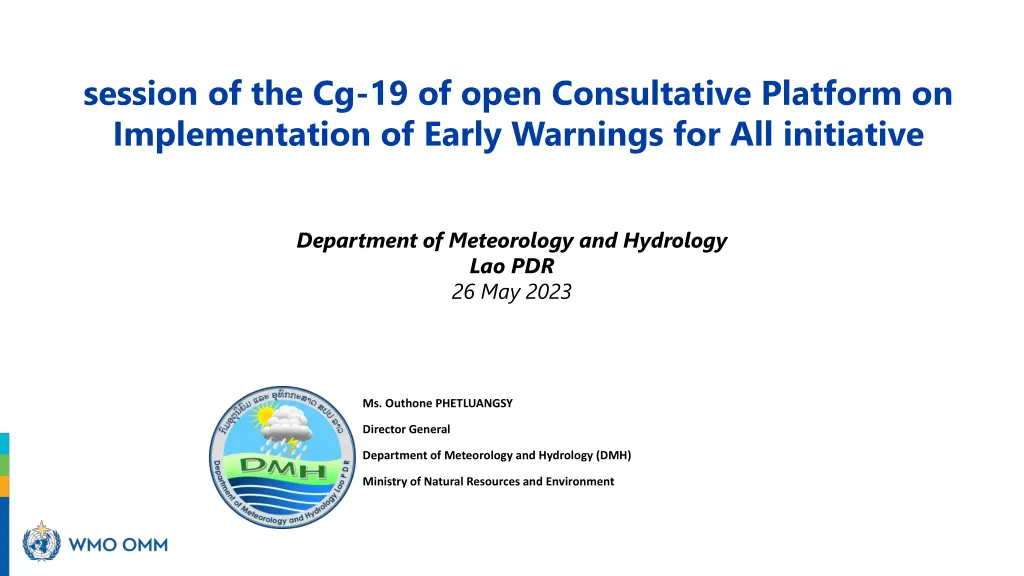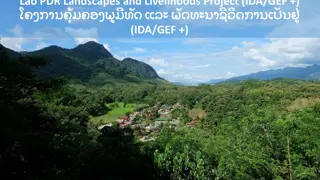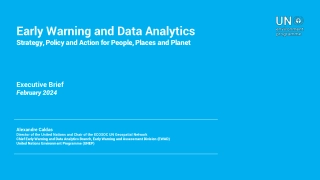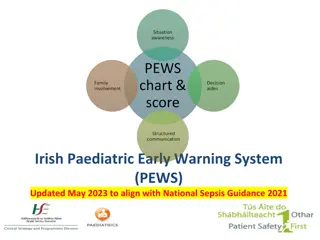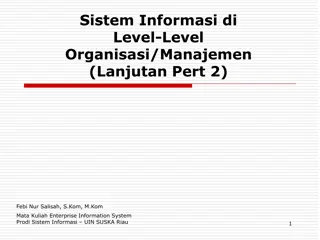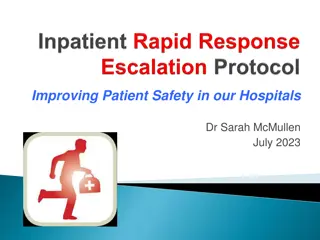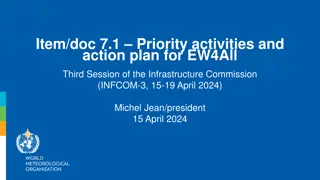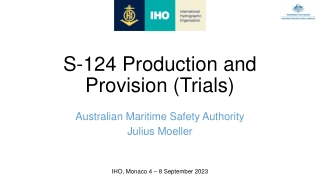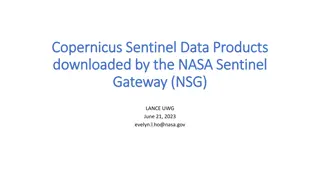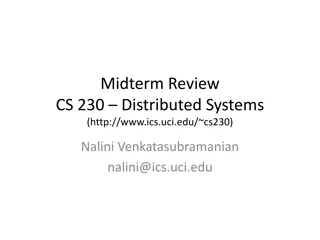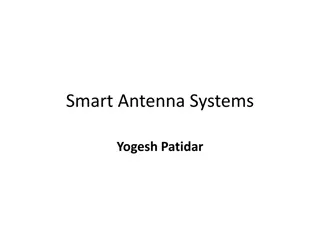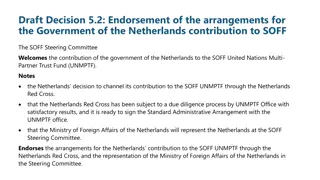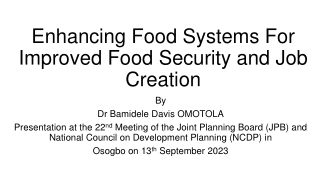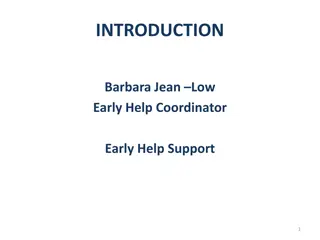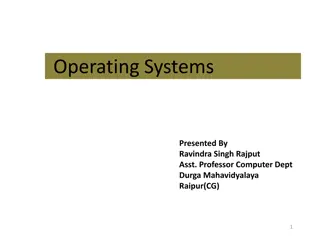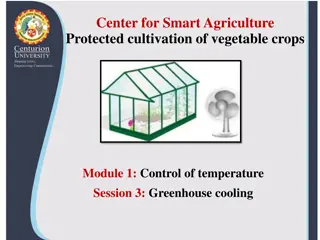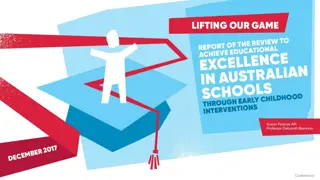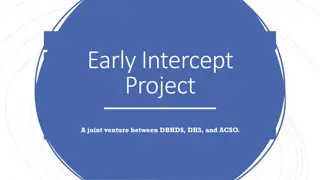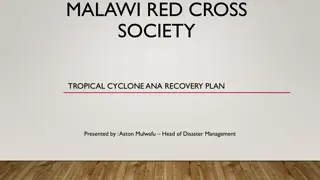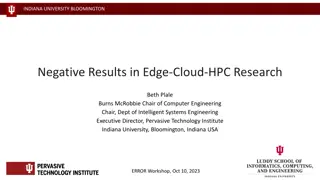Enhancing Early Warning Systems in Lao PDR
Challenges and solutions for improving the early warning system in Lao PDR to address floods, droughts, and extreme weather events. Emphasizes the need for better hydro-meteorological services and infrastructure.
Download Presentation

Please find below an Image/Link to download the presentation.
The content on the website is provided AS IS for your information and personal use only. It may not be sold, licensed, or shared on other websites without obtaining consent from the author. Download presentation by click this link. If you encounter any issues during the download, it is possible that the publisher has removed the file from their server.
E N D
Presentation Transcript
session of the Cg-19 of open Consultative Platform on Implementation of Early Warnings for All initiative Department of Meteorology and Hydrology Lao PDR 26 May 2023 Ms. Outhone PHETLUANGSY Director General Department of Meteorology and Hydrology (DMH) Ministry of Natural Resources and Environment
Outline 1. Major challenges to establish (and/or improve) Early Warning System 2. Key role of NMHS among various stakeholders in the country, such as central/local government, media and private sectors 3. Challenges you are facing in resource mobilization
1. Major challenges to establish (and/or improve) Early Warning System Lao PDR is landlocked country in Southeast Asia, the country s thickly forested landscape is generally comprised of rugged mountains, plains and plateaus. The country s principal waterway is the Mekong River. The Mekong and many small rivers or tributaries are critical natural resources for socio-economic development, particularly for agriculture and hydroelectric sectors Floods, droughts, and extreme weather are the dominant hazards in Lao PDR and cause loss of life, damage agricultural production, and threaten livelihoods. The number of significant flood events has been increasing over the years. Furthermore, climatic variability is expected to exacerbate food insecurity and result in an increase in food prices. Following the severe flooding and devastation in 2008, Typhoon Ketsana in 2009, Typhoons Haima and NokTen in 2011, and Dam Break caused catastrophe 2018
1. Major challenges to establish (and/or improve) Early Warning System Due to the serious impacts of recent weather and climate events in the region which affected economic and business operations, the various sectors in the country are beginning to demand for the improvement of increasing hydro-meteorological products and services. It is therefore critical to prioritize the upgrading of the capabilities of the Department of Meteorology and Hydrology of Lao PDR in providing improved hydrometeorological products and better delivery of services To be able to address these demands, it is necessary and urgent to put in place or to enhance the very basic requirements for an NMHS to function effectively as follows: Adequate networks to monitor hydro-meteorological parameters; Robust communication system for data transmission, dissemination of forecasts and sharing of information; High speed computing system for data assimilation and numerical weather prediction; Human resource equipped with appropriate trainings; and more interaction with users of weather and climate information.
2. Key role of NMHS among various stakeholders in the country, such as central/local government, media and private sectors Lao National Meteorological and Hydrological Service is public agency mandated to provide public meteorological, hydrological, earthquake information and warning services Prime s Minister Cabinet Government Office DMH Structure Government s Office Warning Services and Dissemination Ministry of Natural Resources and Environment (MONRE) 13 Ministries NDMO Lao Red Cross Department of Meteorology and Hydrology (DMH) NDMC DMH- National Early Warning Center Provincial Hydro-met Office Radio, TV, Newspaper Facebook, Youtube, Whatsapp, etc District Hydro-met Observatory Social Media Meteorological Station Hydrological Station Rain gauges Dams Companies Private Sectors
3. Challenges you are facing in resource mobilization By supporting from foreign donors to modernize of Hydromet in Lao PDR such as Korea, Japan, China, WMO, USAID, AusAID, the World Bank, ADB and FAO The selection of stations is based on the main socio-economic development plan, there is no master plan on meteorological and hydrological development. Each project has its own unique system which makes it difficult to implement Each system requires an upgrade or renew license, which consumes a budget Increase training for technical staff, such as short-term, medium-term and long-term to ensure the sustainable management of the system Each project must be fully allocated budget to the management and maintenance of equipment within 2 years after the project is handed over. System Integration is needed
3. Challenges you are facing in resource mobilization Potential initiatives/actions at national, regional, and global levels 1. Regional Level: Continue hydromet data exchange for free and unrestricted 2. National Level: Fostering structured dialogue with the private sector; Putting in place appropriate legislation and business models; performing change management and building on core strengths; Promoting the uptake of WMO standards and guidance Fostering partnerships with civil society entities; Exploring new national and cross-border partnerships.
